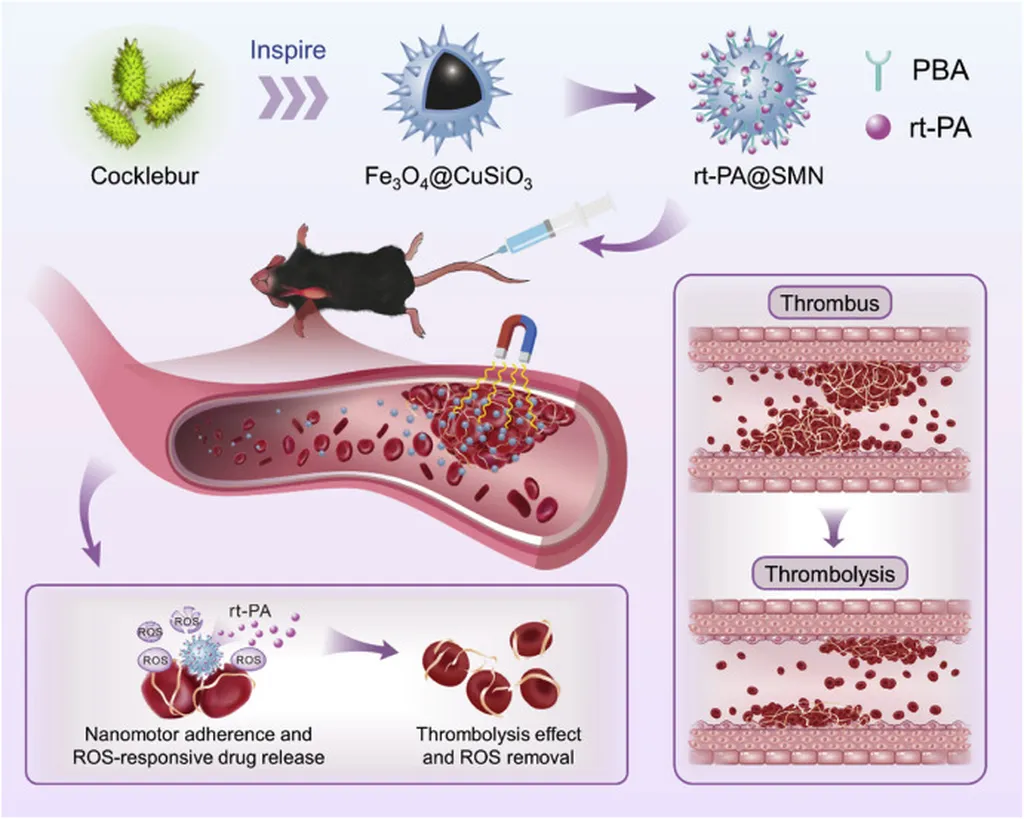In the heart of Nanjing, China, a team of researchers led by Dr. Shuyin Zhou from the Department of Vascular Surgery at Nanjing Drum Tower Hospital has developed a groundbreaking approach to treat blood clots, or thrombi, using bioinspired nanomotors. This innovation, published in the journal *Bioactive Materials* (translated as *活性材料*), could revolutionize the way we tackle cardiac, cerebral, and peripheral thrombotic diseases, offering new hope for patients and potentially reshaping the medical device industry.
The team’s creation is a magnetically-driven nanomotor inspired by the cocklebur, a plant known for its burrs that stick to fur and clothing. These nanomotors, composed of Fe3O4 cores and spiked silicate shells, can rapidly respond to magnetic fields and adhere to thrombi, regardless of blood flow impact. “This adherence is crucial,” explains Dr. Zhou, “as it ensures that our nanomotors stay at the site of the clot, maximizing their therapeutic effect.”
What sets these nanomotors apart is their targeted drug delivery system. The researchers used an H2O2-responsive ester to conjugate recombinant tissue plasminogen activator (rt-PA), a clot-busting drug, to the nanomotors. This clever design ensures that the medication is only released around the thrombus, where reactive oxygen species are abundant, preserving the drug’s potency.
In vivo studies demonstrated the nanomotors’ impressive capabilities. They successfully treated a mouse model, reducing the thrombus area by 3.3-fold compared to direct injection of rt-PA. Moreover, the coagulation system exhibited no obvious changes, indicating the treatment’s safety.
The potential commercial impacts of this research are substantial. The global market for thrombolytic drugs is expected to grow significantly in the coming years, driven by the increasing prevalence of cardiovascular diseases. This innovative approach could lead to more effective and safer treatments, opening up new avenues for medical device companies and pharmaceutical firms.
Dr. Zhou and her team’s work is not just a scientific breakthrough; it’s a testament to the power of bioinspiration and interdisciplinary research. By looking to nature for solutions, they’ve developed a technology that could change the lives of millions. As Dr. Zhou puts it, “Our work is just the beginning. We hope that our findings will inspire further research and development in this field.”
Indeed, this research could shape future developments in targeted drug delivery and thrombolytic therapy. It’s a reminder that sometimes, the most effective solutions come from the most unexpected places. As we look to the future, one thing is clear: the intersection of biology, nanotechnology, and medicine holds immense promise, and we’re only just beginning to explore its potential.

